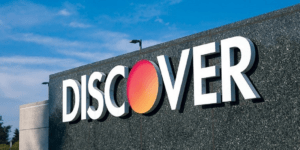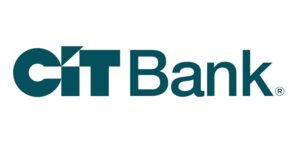 Account balance refers to the differences between the total amount debited and the total amount credited to an account. Balances from ledger accounts makeup the amounts reported in the financial statements. When you check your balance, you may find that you have several balances, such as an “available balance”.
Account balance refers to the differences between the total amount debited and the total amount credited to an account. Balances from ledger accounts makeup the amounts reported in the financial statements. When you check your balance, you may find that you have several balances, such as an “available balance”.
If you want to know more, read the supplementary information below to find out what an Account Balance is and how it applies to you.
Keep up with best banking promotions from financial institutions like HSBC, Chase, Huntington Bank, Citibank, Discover, BBVA, Bank of America, TD Bank, and more!
What Is An Account Balance?
An account balance is the amount of money in a financial repository at any given moment, like a savings or checking account. It can also refer to the total amount of money owed to a third party, such as a credit card company, utility company, mortgage banker or other type of lender or creditor.
The account balance is always the net amount after factoring in all debits and credits. Debts can sometimes be considered negative account balances; for example, when there is an overdraft on a checking account.
Finding Your Account Balance in Banking
In banking, account balance is the amount of money an individual has available in his checking or savings account. The account balance is the net amount available to the person after all deposits and credits have been balanced with any charges or debits.
Due to pending transactions or checks that have not been process, an account balance sometimes does not reflect an accurate representation of the available money.
Balance in Accounting
In accounting, the account balance shoes the net worth of assets and liabilities within the accounting period. This can also be an individual’s or firm’s net worth or total wealth because it subtracts any debts or obligations form positive sums.
Difference Between Account Balance & Available Credit
For credit cards, account balances are the total amount of debt owed at the start of the statement date. It includes any debt rolled over from previous months, which can be liable for interest charges.
Available credit is used to indicate how much credit line the account holder has left to spend. For some bank accounts, deposits may not clear in whole or in part immediately, and may take up to a few business days to show up in your account. The bank will usually indicate to you the available balance and that unavailable amount that is waiting to clear.
Finding Your Account Balance for Other Accounts
Other financial accounts also have an account balance from utility bills to a mortgage accounts, it needs to have an account balance to show an individual consumer the balance of their account. For financial accounts that have recurring bills, such as a water bill, the account balance usually shows the amount owed.
Fund Available
Your available balance is the amount that you can spend right now. You might think of it as “funds available to withdraw”, but there are different options on how you can use the money:
Withdraw cash
You can take that amount out of your account in cash, either at an ATM or bank teller. If you use a credit union that participates in shared branching, you can even withdraw it at other credit unions nationwide.
Spend with your Debit Card
Your debit card pulls funds from your checking account, so you can only use it if you have funds available. Swipe or insert the card to the reader, or make purchases online with that money.
Write a check
Checks are also funded from your checking account. The key difference is that it may take much longer before the payment shows on your checking account. When writing a check, you should assume those funds are no longer available, even if your checking account says that they are. This is something that you will need to keep track of on your own.
Pay a Bill
Available funds can be used online to make a bill payment. If your billers pulls from your account automatically, be sure to have enough money on hand.
Not Yet Available
Sometimes you’ll see an available balance that’s lower than your account balance. In those cases, you can only spend your available balance (or less if you have outstanding checks), and the rest of the money is being held by your bank.
Generally, there are two reasons for a low available balance:
- Deposits to your account have not been cleared yet
- There are pending withdrawals or authorizations against your account
Deposits
When you deposits funds into your account, your bank may not allow you to use those funds immediately. They have to confirm that the deposit or transfer into your account is legitimate, and the money takes several days to transfer. Some banks, however, will allow you to use $200 within the next business day.
Additionally, some banks may even allow you to use the funds more quickly, depending on if you’re a long-time cardholder with no history of depositing bad checks. Moreover, Government-issued checks like tax refunds might also be available quickly.
Consequently, other items such as personal checks and checks from overseas are riskier and banks take longer to release those funds. In addition, banks may even hold cashier check’s for a few extra days in some cases.
Future Withdrawals and Authorizations
Future withdrawals and authorizations can also reduce your available balance. For instance, if you have a scheduled payment coming up, those funds will be unavailable due to the bank knowing that it’ll be out the door soon. Moreover, this is also true about debit cards, because the bank knows that you intend on spending some money.
Consequently, debit cards can be troublesome, because merchants may authorize more than you’re going to spend, and they can lock up your entire balance. Although you may not be able to spend your money, it is always beneficial to know how much money you have. In addition, it is also beneficial to know how much will be available once your holds have been cleared.
Other Balances
In addition to your available balance, you may find an “account balance” or “running balance”. Those balances include all of your money, including all available funds and funds that are being held.
In addition to checking your bank’s math, it is also good to keep track of your funds and spending yourself. For instance, this will allow you to catch any identity theft and keep track of your spending before anything gets out of hand.
Available Cash Crunches
For the most part, you will depend on your bank to release your available funds to you. Consequently, there are ways to ensure that your bank account balance doesn’t run dry.
Direct Deposit
Direct deposit is what gets your money into your account quickly. For instance, you can enroll in electronic payments if your employer still uses checks to pay you. In addition to this, you won’t have to go through the hassle of waiting for your check to come in. Furthermore, you will not have to go through the hassle of depositing the check yourself.
Keep a Buffer
Keeping a buffer of cash is a great way to protect yourself from unexpected expenses and delays. For instance, if you’re constantly “running on fumes”, it may cause issues later on. Therefore, it would be a good idea to have a small cash cushion to help avoid those problems.
Consequently, if that isn’t possible, consider looking into overdraft protection. However, you should only sign up for this if you’re going to use it as a safety net. For instance, don’t make it a habit out of paying those fees – and use a less expensive overdraft line of credit if possible.
 |
 |
Bottom Line
An account balance is a statement of how much money is in an account. If you are trying to change your financial picture, it is essential to track your expenses each month. This allows you to know what you have spent and where.
It is important to balance your account and credit cards to the bank statement each month. While you’re here at HMB, check out our Bank Bonuses, Saving Rates and Credit Card Bonuses!




Leave a Reply